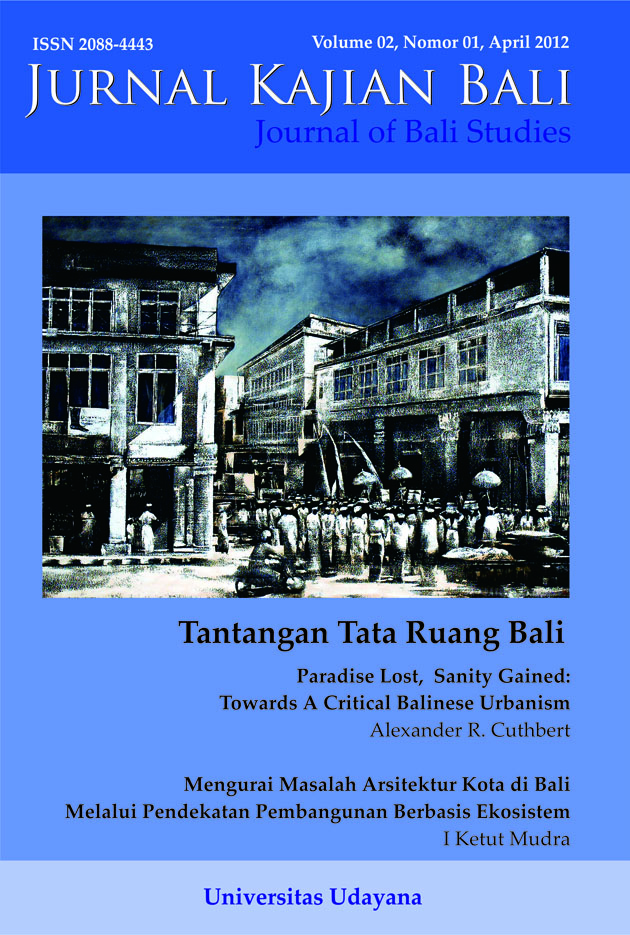Penataan Ruang dan Permasalahannya di Provinsi Bali
Abstract
Abstract
Activities pertaining to development of spatial planningpolicy, its execution, its evaluation and review in spatialdevelopment at a national, provincial, and regencial level inIndonesia is first mandated by the Indonesian State RegulationNo. 24/1992. In line with the instigation the State LocalAutonomy Policy, this regulation has then been substituted bythe Indonesia State Regulation No. 26/2007 on Spatial Planning.For its implementation, this regulation is later completed withthe release of the Indonesian State Regulation No 26/2009.Conformance with these regulatory products as well as theIndonesian State Regulation No. 5/1960 on Land Reform, havegenerated problems, which are different to those of othercountries.Problems relating to spatial planning in Bali are morecomplex compared to those generally encountered by otherprovinces in Indonesia. As an illustration here is a list ofspatial predicaments that Bali has been faced with for the lastfour decades: dispute over land tittles situated in both socioculturallyand environmentally strategic zones; problemsrelating policy development; ambiguity in regard to the integrityof each regulatory product imposed on the society; provisionof financial requirements as well as provision of adequateexpertises required to bring policy into its implementation;development of spatial database system; conflicting interests inland development; economical aspects; socio cultural concerns;environmental protection; politics, demography; security andsafety. In terms of policy implementation, Bali has problems withpermit and public participation. And in term of control, Bali hasdifficulties in regard to the roles of each local government, thepublic and its various social groups.
This paper emphasises that the problems stated above canbe approached using a local to national strategy. The proposedstrategy is to be excecuted by providing every community witha definitive framework, that is completed with a detailed policyattached to every single spatial zone exist at a village level.Govenrment at a district, regencial as well as provincial levelsare also equipped with detailed governing functions and rolesto ensure that they are fully informed and have the capacity toimplement the imposed spatial plan adequately. Within thisstrategy, the main controling position will be held by the public,medias, as well as other parties who have great commitmentsand concerns in protecting Bali’s natural environment, itsculture, and promoting growth and development activities thatconsciously embrace local wisdoms within the dynamic of theIndonesian State.
Downloads
Keywords

This work is licensed under a Creative Commons Attribution 4.0 International License.



















